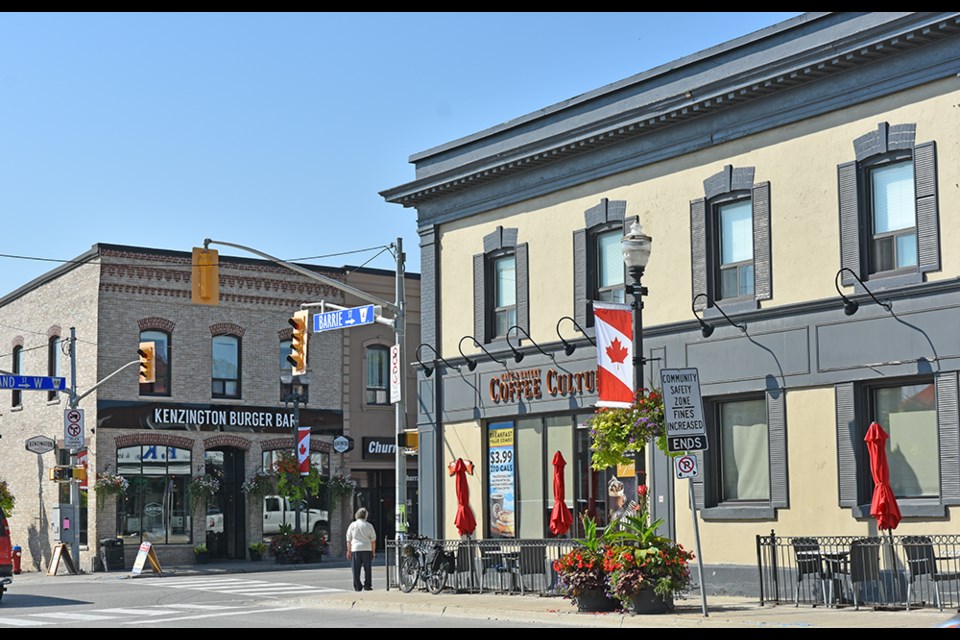Did you know….
Back in the days before overhead wires or troublesome restrictions on wide loads, quite a few homes, barns and sheds were relocated – the ultimate in recycling. Several of those homes can be seen on John Street East. According to archives at the BWG Public Library, the home at 107 John E. was built circa 1880, in Amsterdam – a small mill community on the east side of the Holland River. It was moved to its current site in the early 1900s. The home at 28 John St. E., built in a neoclassical style circa 1850, was also moved from Amsterdam around 1890, by Sam Lukes - to house staff employed in his flour mill. The porch was added later.
According to Susan Chillman, a resident of BWG for 17 years and a former student at Honourable Earl Rowe School Public School and Bradford High School, the tradition of moving houses continued into the 20th century. In 1964, when she was just eight years old, her dad purchased a former Yonge Street stagecoach stop and moved it to its current location on Line 12, just across the from Bradford Greenhouses Garden Gallery. The family lived there for the next nine years. At the same auction, her dad also purchased a convenience store and motels – but sold those off.
Some older buildings have survived in place, but have been repurposed. Driffil’s Hardware Store, operated by brothers Joseph and James Driffil in the 19th century at the corner of Holland Street West and Simcoe Road, is now Kenzington Burger Bar. The building across the road started life as the Central Hotel, became a branch of the Imperial Bank of Commerce in 1917 – the branch that was robbed by members of the Boyd Gang in 1951 – and is now a Coffee Culture Café. And the two attached private residences at 71 and 73 Holland St. E. used to be the Edmanson Tavern, built by John Edmanson in 1832 – one of the few structures in downtown Bradford to escape the Great Fire of 1871 that destroyed 130 businesses and homes.
The large salmon-and-yellow brick building at 61 Holland E., just next door, was built circa 1862 and also survived the Great Fire. It has served as Bradford’s town hall, a public school, and community centre, and it was the site of a weekly market up until the 1930s. At one time, a war memorial was located just west of the building. Now the building houses BWG’s finance department, with the Bradford courthouse, parking, a parkette, flagpoles, Millennium Clock Tower, and cairn dedicated to W.H. Day on the surrounding property.
Several of Bradford West Gwillimbury’s oldest homes have been designated as heritage sites, such as the Parker-Burbidge home on Line 8, built around 1830 of mud blocks, the local version of adobe. Original owner Thomas Parker was a captain in the militia during the Upper Canada Rebellion, and a reeve of West Gwillimbury Township. Other buildings have been lost to arson or demolition. The BWG Child & Family Services Building on Barrie Street was built around 1994 to 1995, on the site of a late Victorian Italianate Villa with widow’s walk, built in 1876 by John MacLean Stevenson. The villa eventually housed the Ursuline nuns who first provided Catholic education in Bradford. It was known as the Old Convent when it was torn down. A painting of the original building can still be seen inside the Child & Family Services Building.
Do you know some interesting local history? Email the details to [email protected].


